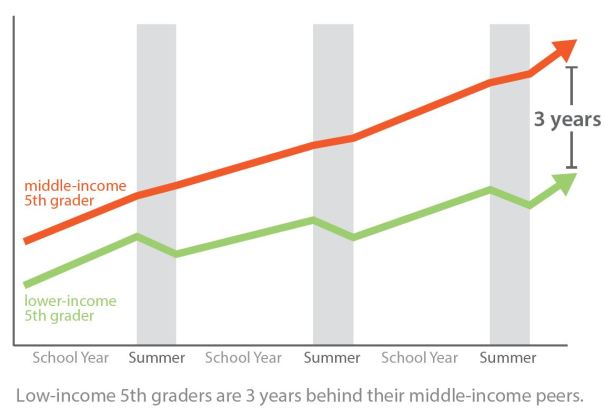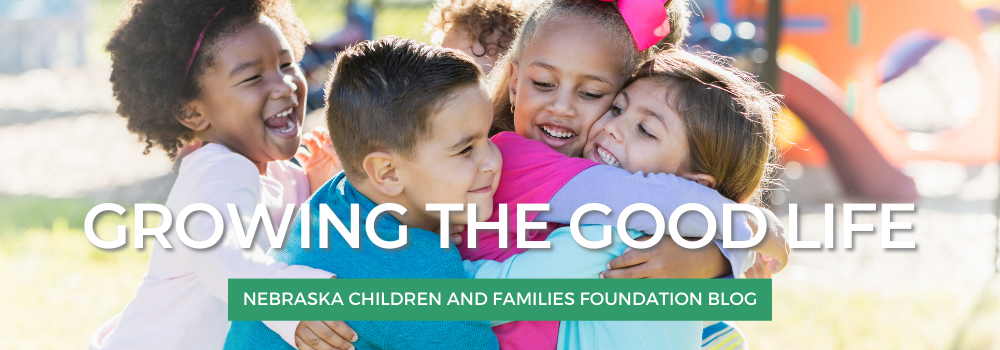By Jeff Cole, Beyond School Bells Network Lead
People are talking. As we emerge from the Great Recession, political and business leaders are united in pointing to increasing the education levels of American youth as the mechanism necessary to prepare the next generation to succeed in a highly competitive, globally interconnected economy.
Evidence seems to suggest that Nebraska is well positioned to thrive in this challenging environment. Lincoln Public Schools has consistently reported high graduation rates throughout the past decade, gains that included dramatic improvements in historically under-performing groups. Similarly, recent national graduation rate data indicates Nebraska is one of the nation’s highest performing states.

So we are poised to thrive, right?
Guess again. The achievement gap is growing.
Unfortunately, these high performance rates disguise a growing problem. In Nebraska, as is the case around the country, if the problem of educational achievement could be distilled to a single catch phrase (which it can’t) it could be characterized as a problem of poor kids doing poorly. If you look at the poverty rates for the Nebraska districts that are below our state averages, it is apparent that these are the same districts with the largest concentrations of students living in poverty.
And the number of poor children populating our state’s classrooms is growing at unprecedented rates.

Schools aren’t the problem.
So what is it about the education system that seems to serve poor students poorly? Nationally education reform discussions tend to pry inside the school box for answers. Education management issues like charter schools, teacher salaries tied to student performance on standardized tests, new and rigorous standards for core subject areas are promoted as the key strategies for improving lackluster performance.
But we’ve seen that these inside the box solutions themselves show lackluster results, with mounting evidence suggesting they lack the potential of delivering dramatic improvements that we have identified as national priorities.
I would argue that these reforms fail because they ignore the proverbial elephant in the classroom – time spent outside of class.
Even when young people are in their peak K-12 education years, they spend less than 20% of their waking hours in formal classroom environment. In addition, youth from disadvantaged backgrounds tend to experience much less educationally rich learning environments before kindergarten. Without thoughtful consideration of this informal learning space – the time before children enter school, the period after school and during the summer months – the leading national voices on education reform are conveniently ignoring the gross disparities in educational opportunities outside of schools that leads to achievement gap.
So what’s the solution?
There’s a growing body of research and practice around programs aimed at bridging what is being termed a widening Opportunity Gap between rich and poor Americans. The University of Chicago Nobel Laureate James Heckman’s research, which was recently shared with an audience in Nebraska, identified investments in high quality early childhood education programs for low income youth as having some of the highest rates of return of any public investment.
Similarly recent research examining the impact of low-income youth’s sustained involvement in high-quality afterschool and summer programs during the K-8 years have shown that for minimal cost young people from high-poverty backgrounds show significant increases in academic performance, attendance and positive behaviors.
These expanded learning programs complement, rather than duplicate the school day experience, building on and enhancing the quality instruction provided in most Nebraska classrooms. They bring together community partners and provide engaged, hands-on learning experiences that engage students in learning environments based on principles of positive youth development and positive relationships with caring adults. They reach out and provide support to parents and other community residents that have the ability to make the informal learning space into rich, nurturing hours of opportunity for all youth – regardless of their economic class.
So, while our national leaders are talking, in many cases they appear to be talking around the problem – which is the predictable, negative correlation between poverty and educational outcomes. But in Nebraska we have the opportunity to do more. We can have more practical conversations grounded in an understanding that our public schools are doing their work well.
The real hope for lasting change rests in all of us, in communities across the state. Realistic, common-sense strategies – such as early childhood learning and expanded learning time programs – that can be implemented in a cost effective way in communities across our state can help close that achievement gap and support low-income youth and their families, while laying the foundation for the good life for future generations of Nebraskans.
Stay up to date on Beyond School Bells, our Extended Learning Program initiative. Sign up for our blog and monthly e-newsletter.


Leave a comment